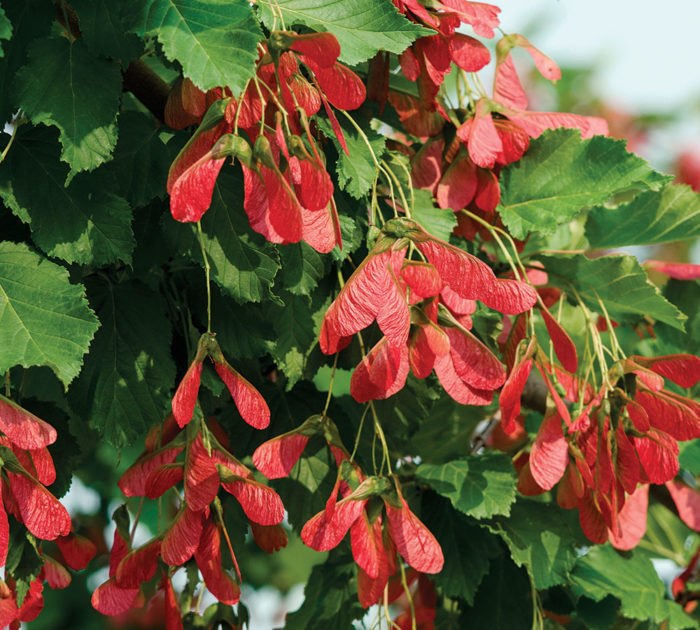
Everyone enjoys spring gardens, with the fresh foliage and colorful flowers that lift our spirits after a long, dull winter. And summer gardens are glorious, of course, with an abundance of bold blooms and rich colors that perfectly suit outdoor summer activities. By August, though, heat and dry spells take their toll on spring and summer perennials; gardens can look tired and tattered.
Time to retreat indoors? No way. Below are four plants that keep the interest going in August and into autumn.
1. Azure Blue Sage
Name: Salvia azurea
Zones: 4–9
Size: 3 to 5 feet tall and 2 to 4 feet wide
Conditions: Full sun; well-drained soil
Native Range: Southeastern United States
This sage is a welcome addition to any water-wise garden because of its beauty and its minimal maintenance demands. Its spikes of late-season flowers are particularly attractive to bumblebees (which are frequently found hanging from the tubular petals), other pollinating insects, and hummingbirds. The plant can grow to a towering height before flowering and may flop over if not supported. Encourage more compact growth by pruning it to half its height early in the season.
 2. Moon Carrot
2. Moon Carrot
Name: Seseli gummiferum
Zones: 5–9
Size: 2 to 3 feet tall and 12 to 18 inches wide
Conditions: Full sun to partial shade; adapts to a wide range of soils
Native Range: Eastern Europe
With moon carrot around, your garden will be humming with pollinators of all stripes late into summer. Its inflorescence is a large compound umbel raised up on a robust stalk from a rosette of lacy, silver-blue foliage, which is attractive in its own right. Each umbel starts out as a collection of pink, fl at-topped floral buds that expand into white, tightly packed florets. This plant is a biennial or short-lived perennial that is easy to grow from seed. Once established it will self-sow, so you won’t lose it. Add it to a dry garden or a site that gets regular water—it is not fussy.
 3. Hot Wings® Tatarian Maple
3. Hot Wings® Tatarian Maple
Name: Acer tataricum ‘GarAnn’
Zones: 4–10
Size: 15 to 20 feet tall and wide
Conditions: Full sun to partial shade; well-drained soil
Native Range: Western Asia to southeastern Europe
This small, multi-trunked tree is tough and reliable. It tolerates cold, drought, and a wide range of soils, and it grows quickly, forming an appealing, rounded crown. None of these traits are particularly exciting, but they are desirable. The real fun comes midsummer when the samaras (or fruits) mature. The samaras are big, round, and abundant, and their bright red wings transform an otherwise overlooked tree into a conversation starter. Fall color is generally a mix of orange-red to yellow. Although the red samaras fade as the season ends, they persist on the tree, giving it off-season interest.
 4. Undaunted® Ruby Muhly Grass
4. Undaunted® Ruby Muhly Grass
Name: Muhlenbergia reverchonii ‘PUND01S’
Zones: 5–10
Size: 15 to 30 inches tall and 18 to 24 inches wide
Conditions: Full sun; dry to moderately moist, well-drained soil
Native Range: Central Oklahoma to Central Texas
Undaunted® ruby muhly starts its end-of-season show by flowering in late summer, and it maintains its beautiful airy form throughout fall and winter. Like other warm-season grasses, muhly greens up late as temperatures warm, with wispy, threadlike leaves emerging from a dense tuft. Its flowers are purple-red, and their abundance gives the feathery mound a purplish glow. This cultivar has especially colorful blooms and greater cold tolerance than the straight species.
Daniel Murphy is a horticulturist and collections curator at the Idaho Botanical Garden
in Boise, Idaho.
Photos: Bill Johnson (1); millettephotomedia.com (2, 3); Joshua McCullough (4); courtesy of Daniel Murphy



















Comments
Log in or create an account to post a comment.
Sign up Log in